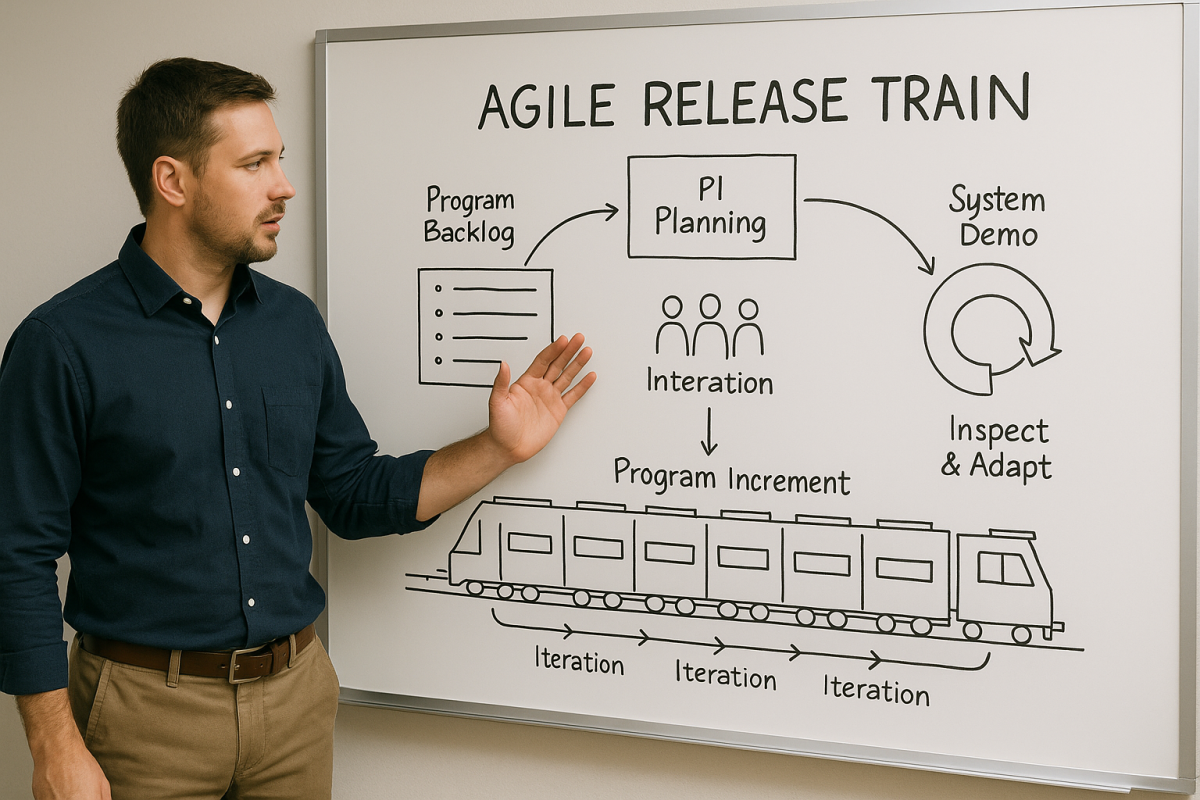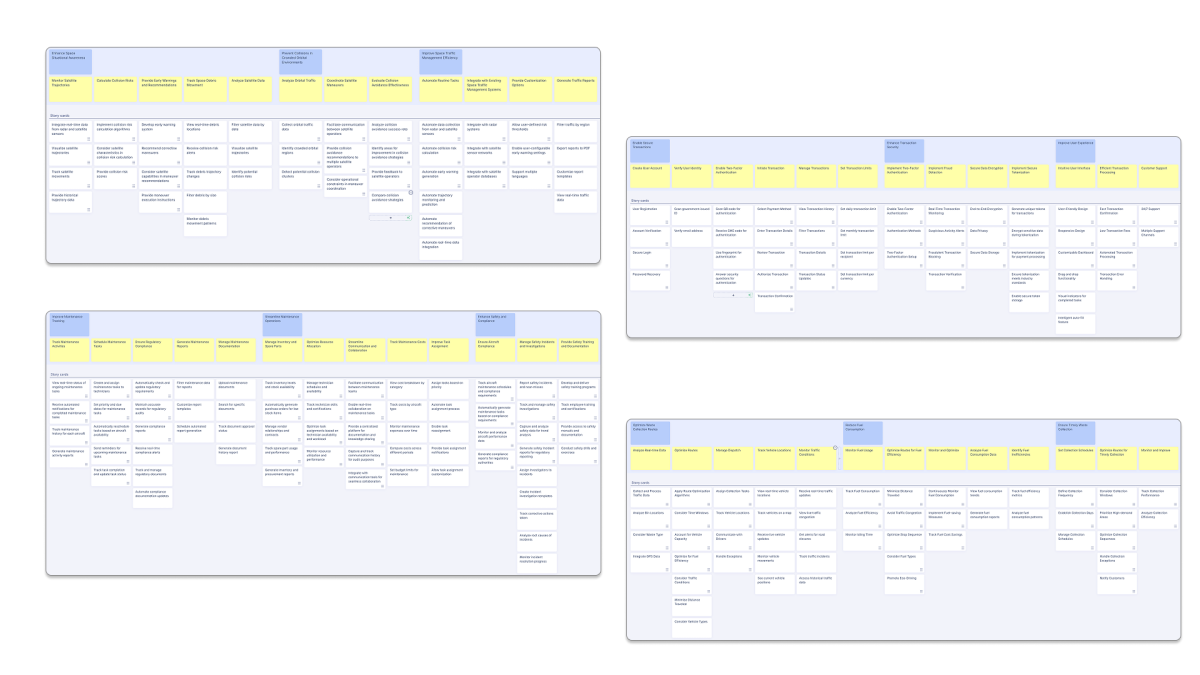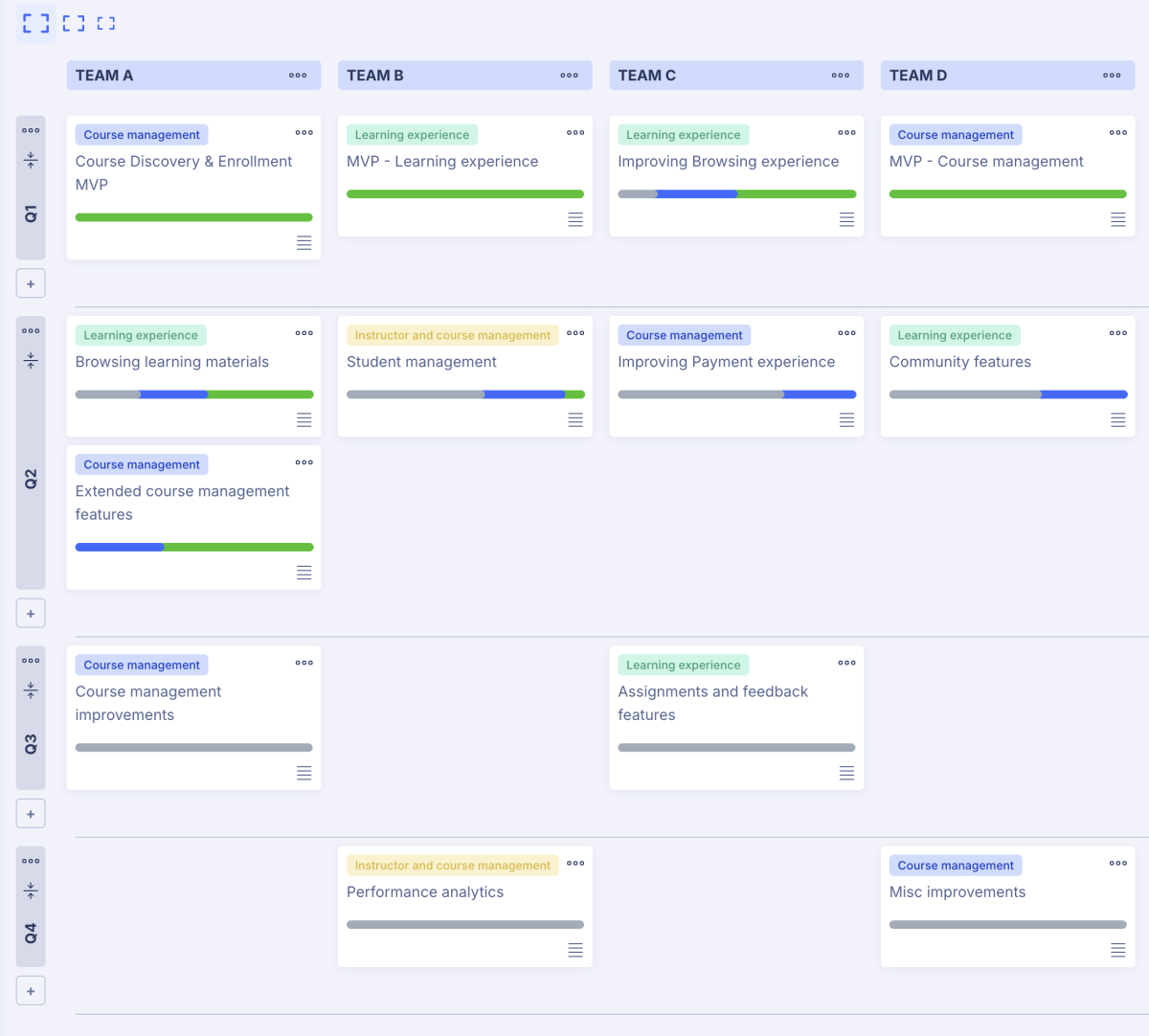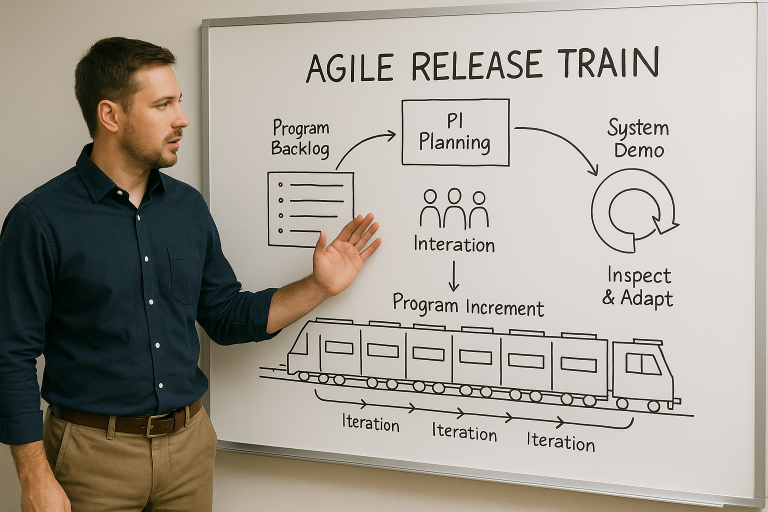In today’s fast-paced enterprise landscape, the Agile Release Train is the engine that powers synchronized and predictable value delivery across multiple teams.
By aligning 50–125 practitioners around a shared cadence and backlog, the Agile Release Train helps organizations adopt SAFe with confidence, delivering new capabilities every 8–12 weeks on a reliable schedule.
What Is the Agile Release Train?
The Agile Release Train (ART) is the central organizing principle of the Scaled Agile Framework (SAFe), designed to synchronize and align multiple Agile teams around a shared mission and delivery cadence. Imagine a high-speed train composed of 5–12 individual cars, each representing an agile team, carrying its cargo of features and user stories. Together, these cars move in lockstep, pulling a continuous stream of value from concept to production. By operating as a single, long-lived “train,” the ART ensures that disparate teams no longer work in isolation but instead coordinate their efforts toward a clear, common objective.
At its core, the Agile Release Train commits to delivering fully integrated, tested, and shippable increments of functionality at regular intervals—typically every 8–12 weeks, known as a Program Increment (PI). Rather than relying on ad hoc handoffs or one-off releases, the ART establishes a predictable rhythm. All teams on the train begin and end their iterations simultaneously, and they converge at key events, such as PI Planning, System Demos, and Inspect & Adapt workshops. This synchronized cadence reduces variability, exposes dependencies early, and creates a reliable heartbeat for the organization’s delivery pipeline.

Structurally, the agile release train encompasses several critical elements:
- Program Backlog: A prioritized list of Features and Enablers managed by Product Management, reflecting the highest-value work for the entire train.
- PI Planning Event: A two-day, face-to-face (or virtual) workshop where every team plots its course for the upcoming increment, identifies dependencies, and commits to objectives.
- Roles & Responsibilities: Key roles include the Release Train Engineer (RTE) as the “conductor,” Product Managers who steer the vision, System Architects who ensure a solid architectural foundation, and Business Owners who validate outcomes.
- Program Kanban: A visual workflow board that tracks Features from idea inception through analysis, implementation, and release readiness.
Beyond its structural components, the Agile Release Train embodies a shift in mindset. It treats large-scale development as a continuous delivery system rather than a collection of separate projects. By embedding quality practices, shared metrics, and regular integration points into the train’s operations, organizations achieve faster feedback loops and higher levels of predictability. Each time the train “rolls into the station,” stakeholders can inspect working software, adjust priorities based on real-world feedback, and ensure that the next leg of the journey delivers even greater value.
How the Agile Release Train Works in SAFe
The Agile Release Train (ART) brings structure and rhythm to large-scale Agile delivery by following a predictable, synchronized process. Let’s break down the key elements that keep the train running smoothly:
Program Increment (PI) Cadence: Structuring the Roadmap
The Program Increment (PI) is a fixed timebox, usually 8 to 12 weeks, that provides the foundation for ART planning and execution. Each PI consists of multiple iterations (typically two weeks long) followed by an Innovation and Planning (IP) iteration.
This steady cadence ensures predictability and a regular flow of value, allowing teams to align around a standard schedule and make course corrections based on honest feedback.
PI Planning: Aligning Teams Around a Common Vision
At the start of each PI, the ART holds a two-day PI Planning event where all teams collaborate to define objectives, identify dependencies, and commit to a shared plan.
This critical event sets the direction for the upcoming increment, ensuring that teams understand business priorities, technical constraints, and how their work fits into the bigger picture.
Synchronized Iterations: Moving Together in Unison
All teams on the Agile Release Train operate on synchronized iterations, starting and ending sprints at the same time.
This alignment simplifies cross-team collaboration, enables regular System Demos to showcase integrated work, and helps surface risks early. By working in rhythm, teams can better manage dependencies, integrate frequently, and deliver value more reliably.
Key Benefits of the Agile Release Train
Implementing an Agile Release Train (ART) brings powerful advantages for organizations looking to scale Agile practices and deliver value more predictably. Here are the main benefits:
1. Predictable Delivery
The fixed cadence of Program Increments (PIs) and synchronized iterations creates a reliable rhythm for teams to plan, execute, and deliver. Stakeholders can count on regular system demos, progress reviews, and releases, which reduce uncertainty and improve forecasting.
2. Cross-Team Alignment
The Agile Release Train synchronizes multiple Agile teams around a shared mission, vision, and backlog. Through structured events like PI Planning and System Demos, teams maintain transparency, manage dependencies proactively, and stay aligned with business priorities.
3. Faster Time-to-Market
By coordinating all teams to work in parallel toward common objectives, the ART enables faster development cycles and quicker delivery of features. Organizations can also release on demand, deploying new functionality whenever business needs dictate, rather than waiting for the end of a full PI.
4. Built-In Quality
Quality isn’t an afterthought in the Agile Release Train—it’s built into every iteration. Frequent integration, system-level demos, and collective ownership of quality practices ensure that technical debt is kept under control and that teams deliver fully tested, production-ready work.
5. Continuous Improvement
At the end of each PI, the ART holds an Inspect & Adapt (I&A) workshop to reflect on results, identify areas for improvement, and apply lessons learned. This ongoing feedback loop helps the train improve over time, becoming faster, more efficient, and more responsive to change.
6. Stronger Stakeholder Engagement
Business Owners and other key stakeholders are active participants in the Agile Release Train through PI Planning, System Demos, and regular reviews. This close collaboration ensures that development work stays aligned with customer needs and evolving market demands.
How StoriesOnBoard Supports the Agile Release Train Process
Successfully managing an Agile Release Train requires clear visualization, alignment, and ongoing tracking across multiple teams and initiatives. StoriesOnBoard is a powerful tool that supports the ART process by providing a visual, collaborative space for planning and tracking work across PIs.
Create Multiple Story Maps for Different Teams and Features
In StoriesOnBoard, you can easily create multiple story maps—each focused on a different product, feature set, or team. This flexibility mirrors the structure of an Agile team (ART), where several teams contribute to a larger solution.
Each story map allows teams to organize their backlog around user journeys, prioritize features for upcoming product iterations (PIs), and align on shared goals. Having multiple story maps makes it easy to manage complexity while keeping each team’s work focused and transparent.

Visualize Progress with the Roadmap View
StoriesOnBoard’s Roadmaps takes story mapping even further by providing a high-level visualization of how story maps and their features progress over time.

Teams and stakeholders can track delivery across multiple PIs, identify potential bottlenecks early, and adjust plans to stay aligned with ART-level objectives. The roadmap view provides Release Train Engineers (RTEs), Product Management, and Business Owners with a real-time overview of traction, ensuring the train stays on course to deliver customer value.
Align Teams and Improve Collaboration
By using StoriesOnBoard, teams gain a shared visual language that makes PI Planning, backlog grooming, and iteration planning sessions more effective.
Everyone can see how user stories connect to bigger business goals, and collaboration becomes smoother across distributed teams, whether they’re participating in PI Planning or reviewing system demos.
Summary
The Agile Release Train is the engine that powers large-scale Agile delivery within the SAFe framework, aligning multiple teams around a common cadence, vision, and set of objectives. Through structured Program Increments, synchronized iterations, and continuous system integration, ARTs create a predictable, reliable flow of value to customers and stakeholders.
By leveraging tools like StoriesOnBoard, organizations can make the Agile Release Train even more effective. StoriesOnBoard enables the creation of multiple story maps to manage complex backlogs across teams and offers a visual roadmap to track progress across Program Increments. This helps teams stay aligned, manage dependencies, and keep business goals clearly in sight.
Adopting the Agile Release Train—and supporting it with the right practices and tools—allows enterprises to deliver faster, collaborate better, and continuously improve, setting the stage for true business agility.
